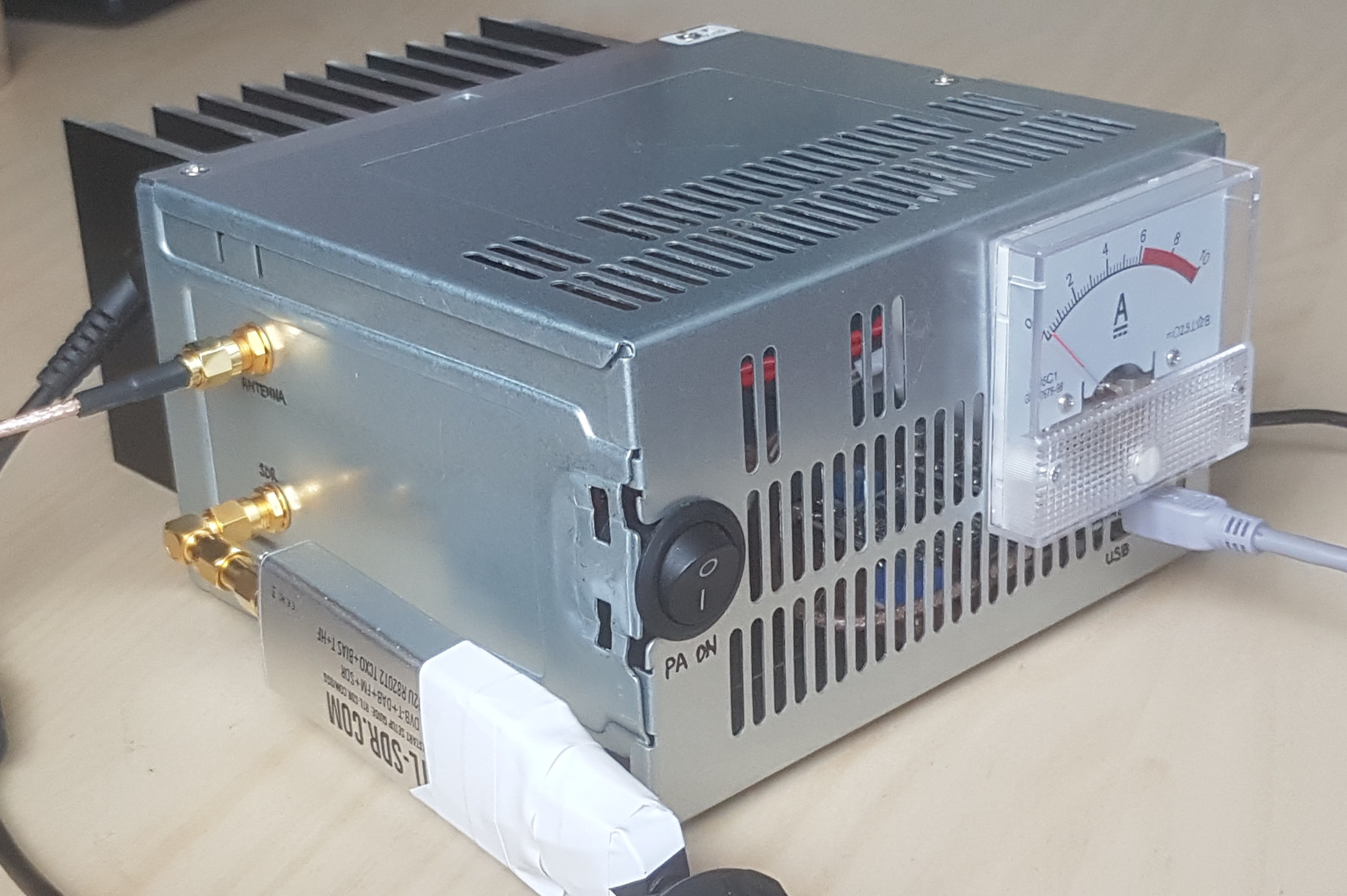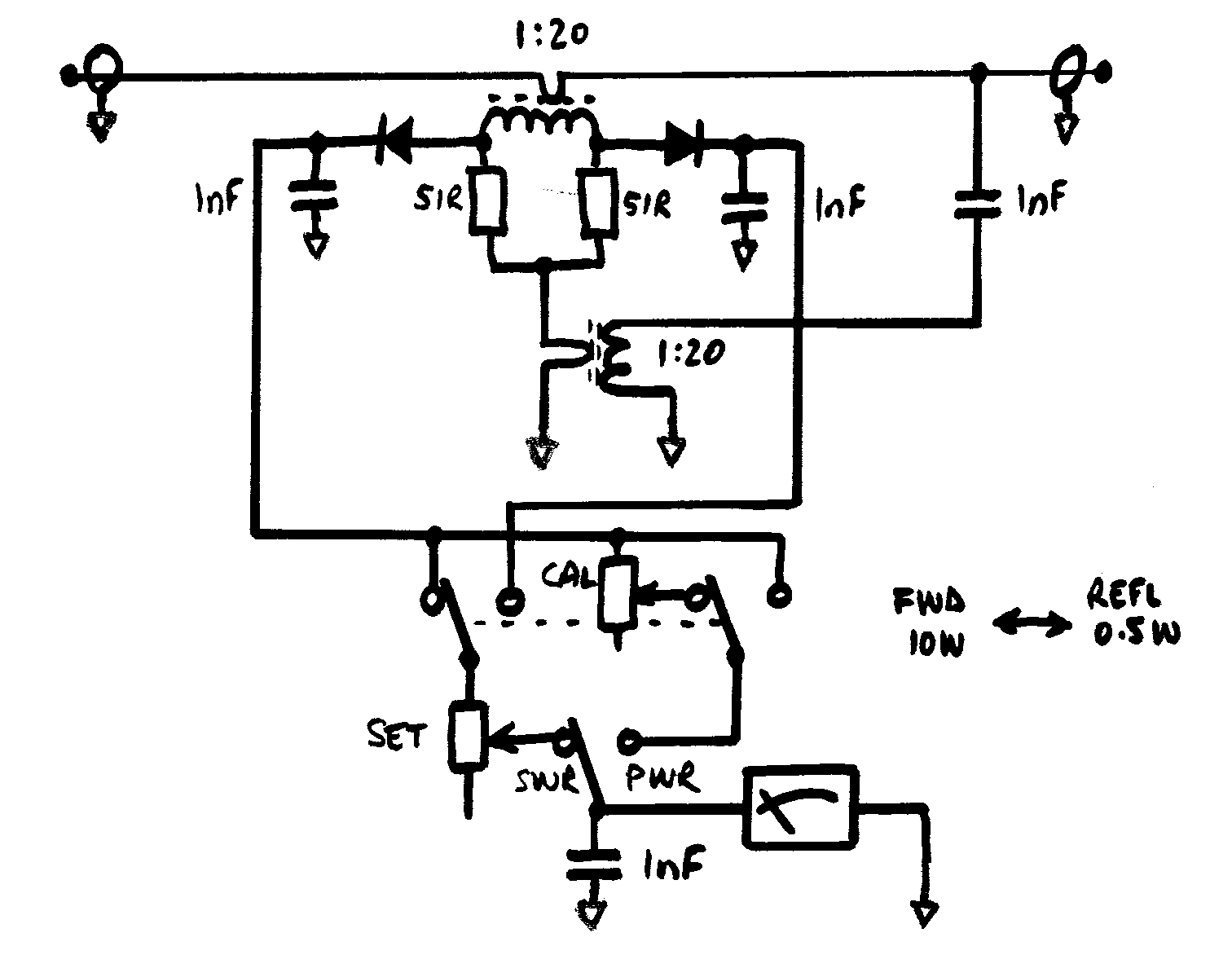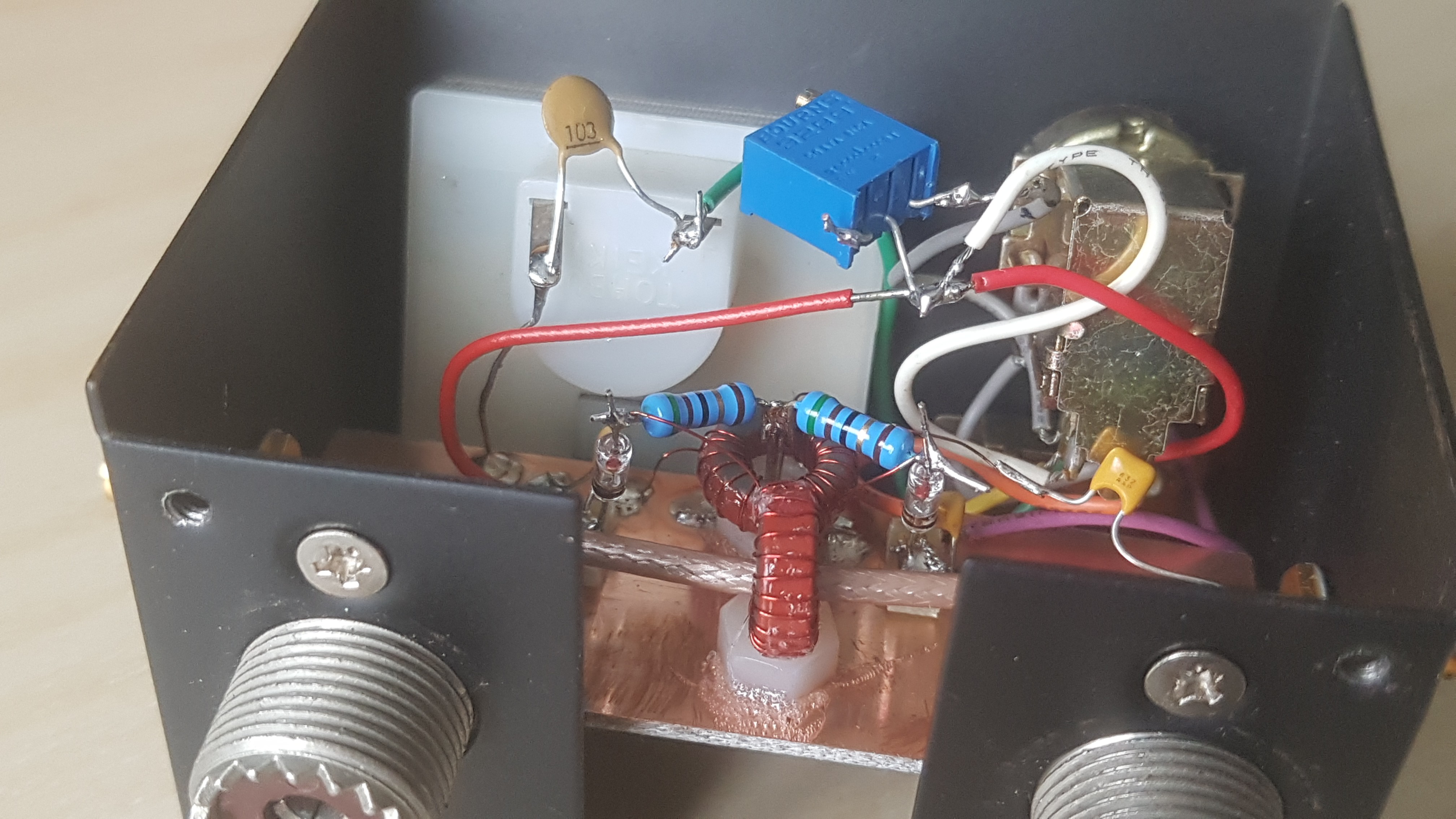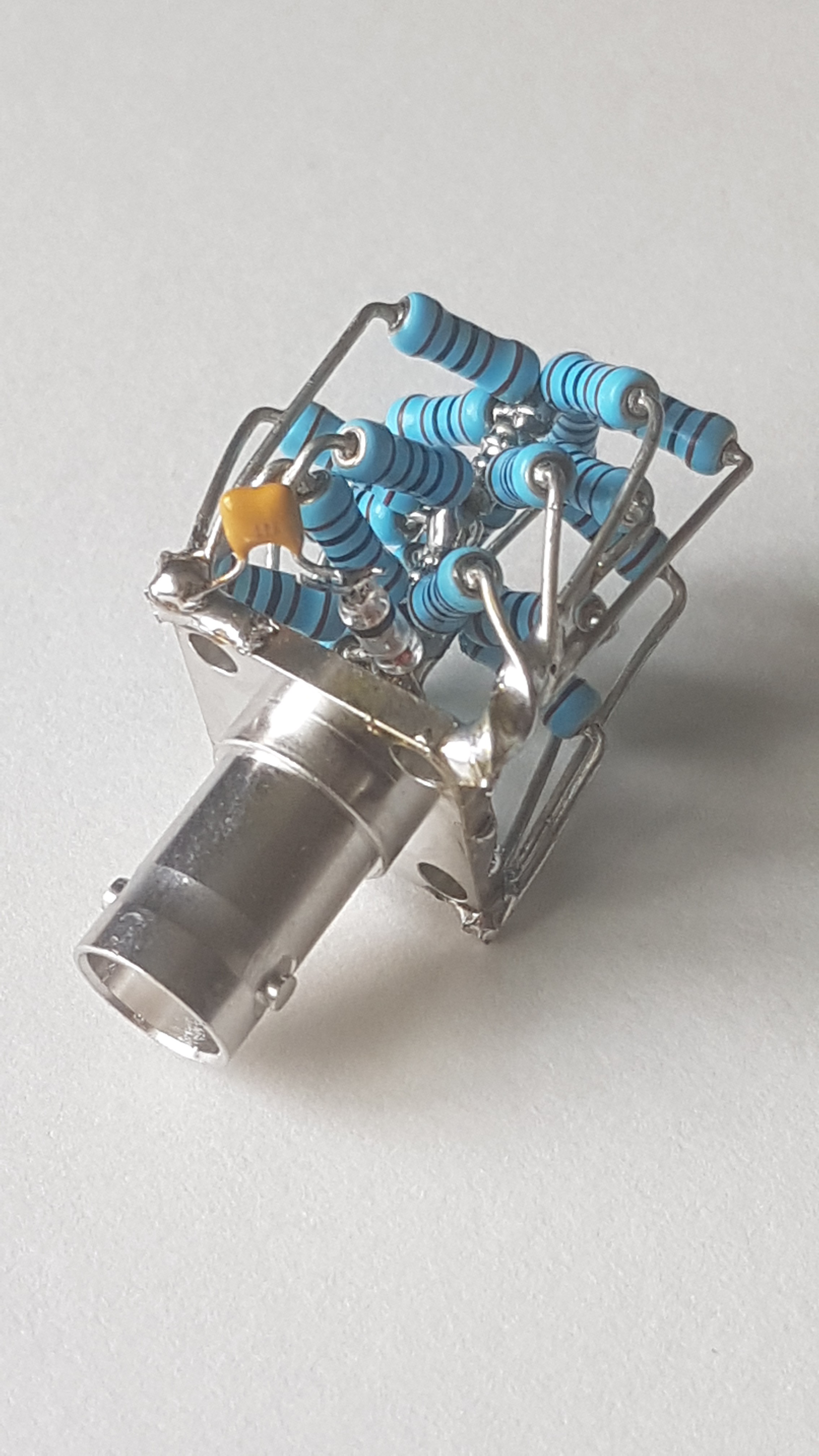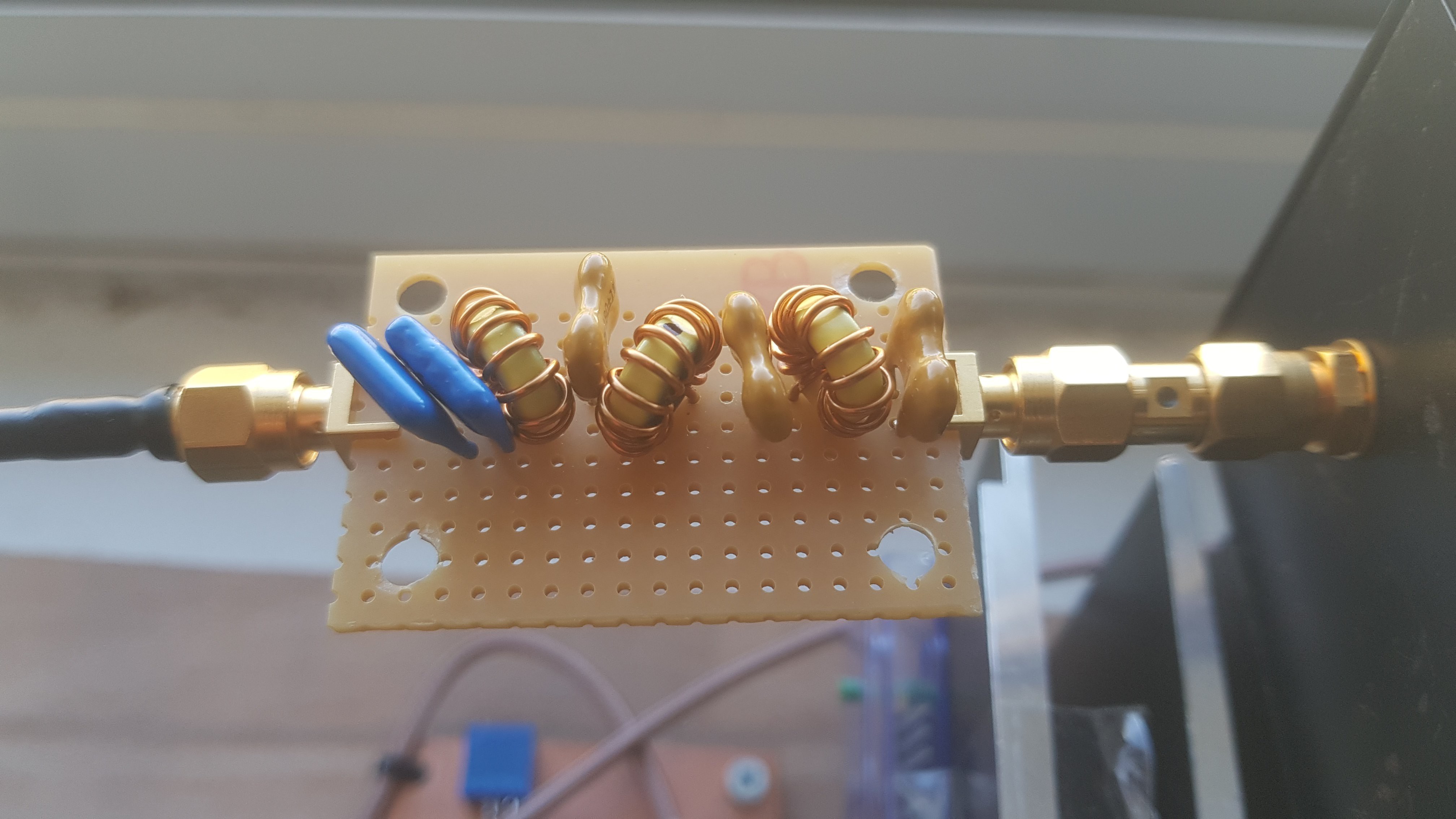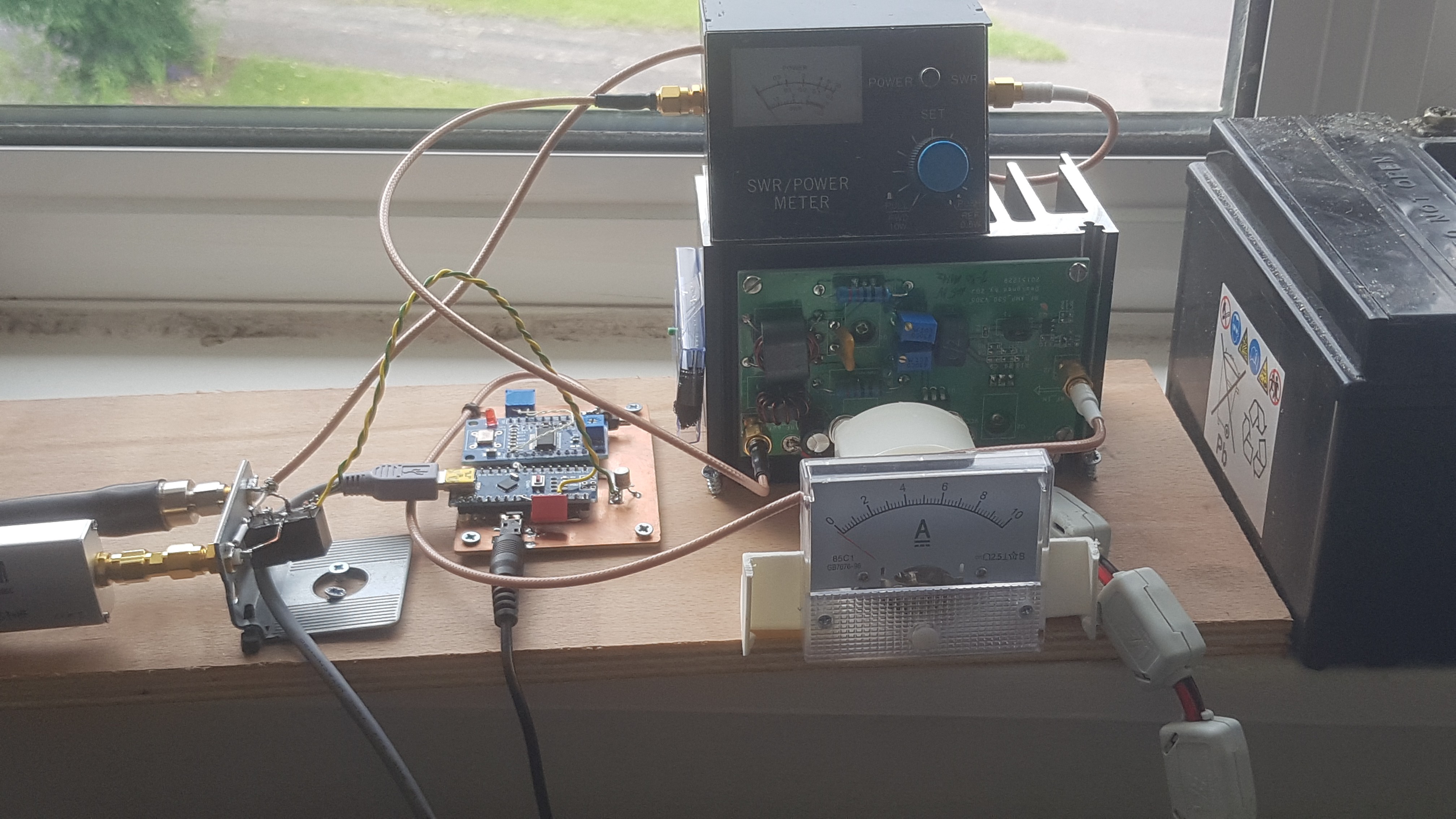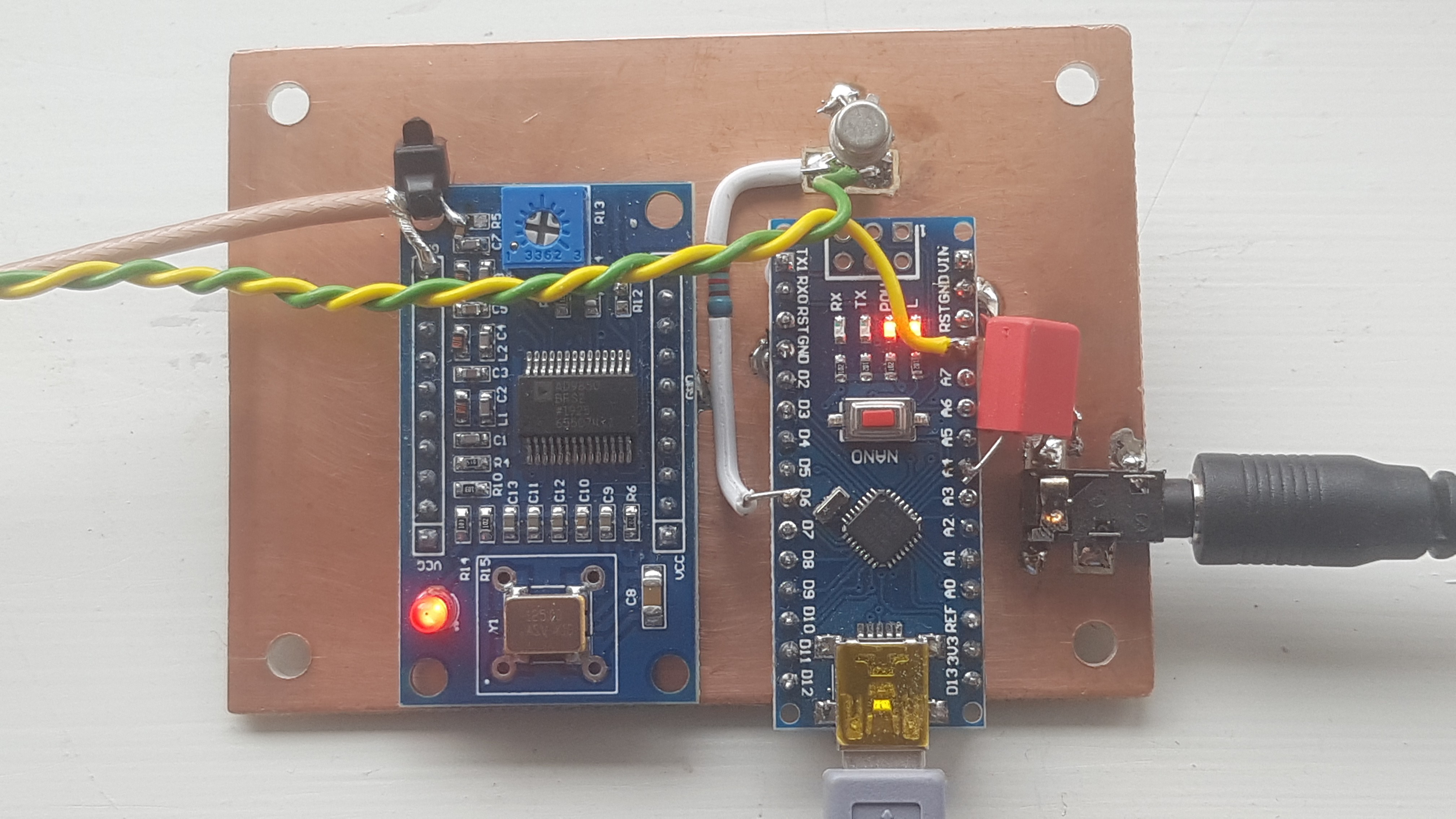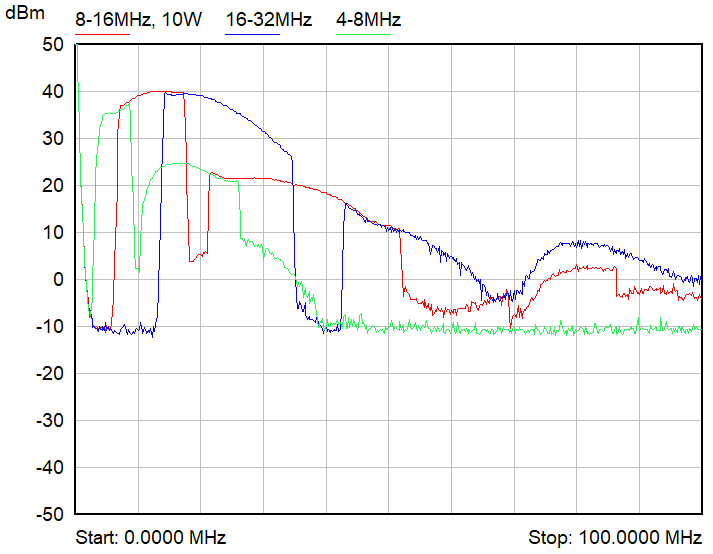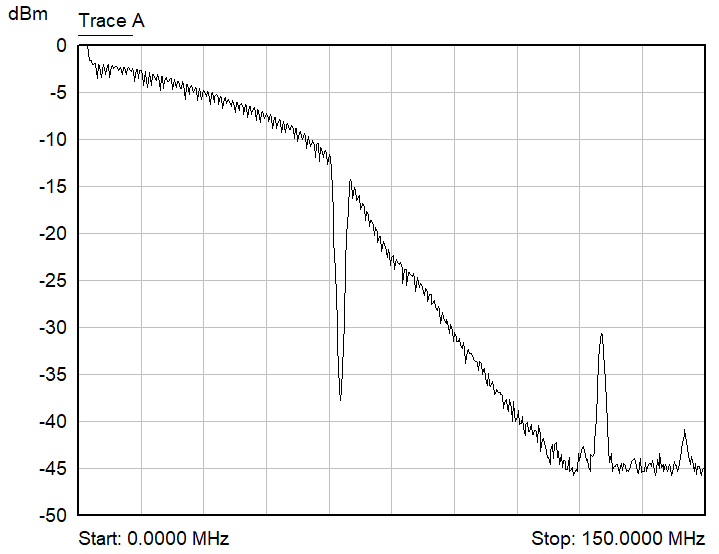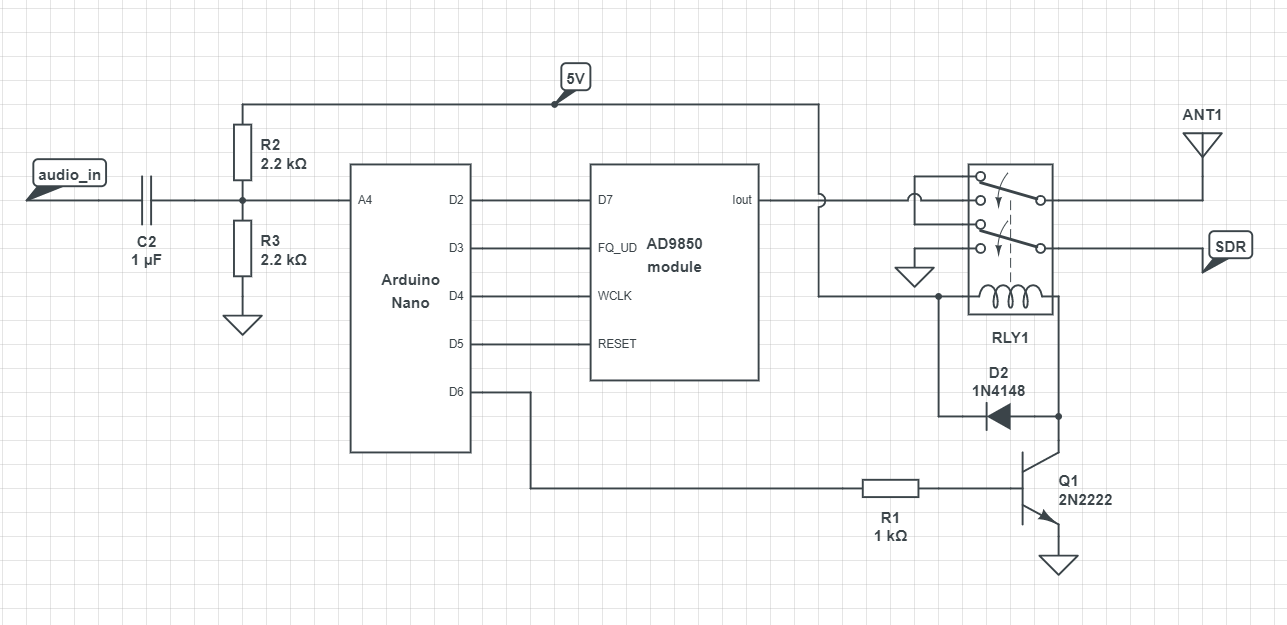-
All the best ideas (2)...
10/12/2021 at 08:24 • 0 commentsLooks like QRP-labs have been busy doing the same thing too (plus a whole heap of extra functionailty):
Well done them!
-
All the best ideas have been done before
09/08/2021 at 07:15 • 0 commentsHaving been quietly pleased about this idea for a couple of months now, it turns out I was beaten to it. I didn't realise but the QRPguys have designed a complete transceiver around the same frequency-estimation FSK technique, that they call AFP-FSK. All the best ideas!
Would be great to do a comparison of their code and mine to see how the audio frequency estimation accuracy and tracking rates compare, but I don't have the time. Either way, whilst their product is fully-featured, transmit and receive, custom PCB, and with a display and buttons, etc. mine has the benefit of being about as simple as possible (and very cheap).
-
Now in a box
09/04/2021 at 07:08 • 0 commentsThe cheapest way, by far, to find a decent enclosure was to buy an old ATX power supply and gut it. A bit of drilling, snipping and filing later and everything fits.
![]()
The complete transmitter installed in an old ATX power supply case. -
More power!
08/21/2021 at 13:25 • 0 commentsI've been a bit busy gutting and rebuilding my power/SWR meter. It now has all new innards which should give more accurate performance over a wider band, maybe 10-150MHz. The schematic below shows the circuit I used. The two transformers are wound on Micrometals T44-2 toroids.
![]()
Power/SWR meter circuit diagram ![]()
A photo of the fiddly wiring required. ...Aaaaand here's a dummy load I threw together to test/calibrate it with. My NanoVNA shows it's good to at least 150MHz (VSWR <1.1), and probably ok to dissipate 10-20W for short periods. Oh, and it has a diode/cap so I can double-check power levels using a multimeter. I've since put it in a sealed tin so that one day I might fill it with mineral oil if I ever need better heat dissipation.
![]()
Yes, that's twenty 1kohm resistors mashed into a heap. So with that, I turned up the PA to 2W (oooooh! I hear you cry...). Happy days.
-
Low-pass filter
07/14/2021 at 09:31 • 0 commentsI have now cobbled together a low-pass filter to try to suppress the PA harmonics. This one has a corner frequency of 28MHz (to allow me to use it up to 10m band), using the following components (left to right):
shunt C: 100pF
series L: 12T on T37-6 core, making about 485nH
shunt C: 180pF
series L: 13T on T37-6 core, making about 580nH
shunt C: 180pF
series L: 12T on T37-6 core, making about 485nH
shunt C: 100pF
![]()
28MHz LPF Performance simulated in LTSpice, and then confirmed with a nanoVNA. I'm now feeling a bit happier about winding the power up without annoying the neighbours...
-
And we're off!...
07/04/2021 at 10:38 • 0 commentsFinally had a chance to get the PA up and running, add variable output power control to the DDS, and connect the two together. Everything's working very nicely and I can now easily adjust output power between <100mW and 10W (and more). I bought an old (and very sickly) power/SWR meter, and calibrated it to 10W, so at least I have a rough indication of power level.
![]()
All the bits hurriedly lashed down to a bit of ply - not pretty but it works. No output low-pass harmonic filter yet, but harmonics are approx. -40dBc at second and -25dBc at third, so probably won't cause too much interference. For now I'll keep the output power to around 1W to be on the safe side. Actually, the old 12V lead-acid battery I'm using to power the PA is knackered so most of the time I'm probably only making half that...
On my very first FT8 transmission I got a QSO - so clearly it works! And now getting spots well in excess of 5000km on FT8.
-
Get smart
06/20/2021 at 15:00 • 0 commentsTook a little time to transfer the Arduino/DDS circuit to a bit of copper-clad board but I'm glad I did because it looks much neater.
![]()
Still regularly trying it on 20m, 15m and 10m bands, using WSPR and FT8 modes. Regularly hitting 900-1000km using WSPR, but almost no luck at all on FT8 (unsurprisingly). Really must get that PA finished!
-
First look at the PA
06/17/2021 at 16:39 • 0 commentsWas in the office today so had a chance to run up the PA on the bench. Having first carefully set the MOSFET bias so that each was passing something like 25mA (according to instructions here), I could then adjust the drive levels to get a nominal 10W out. Then, sweeping the frequency in bands (4-8, 8-16 and 16-32MHz) the plot below shows how the output looks, including harmonics:
PA output, whilst frequency is swept - max hold on. Clearly the output power isn't very flat, but conveniently for me it peaks at about 14MHz (20m band) which is where I was intending to use it most. Third harmonic is the worst offender, at about 23dB down, so a filter is required on the output - no surprises there. Would be good to get the 2nd harmonic from -33dBc down to <-43dBc, so then I'd only need a single LP filter (with corner=28MHz) to cover all the bands from 20m to 10m and still meet "the -43dBc requirement"*. Will see if I can tweak the MOSFET biases to achieve that.
The real shocker was the drive level required: only -27dBm! (at 14MHz). I might just bypass the first stage as I definitely don't need all that gain...
Lastly, this: (14MHz, 12V supply)
Pout (W) last stage current (A) Efficiency (%) 1 0.74 11 2 1.09 15 5 1.75 24 10 2.53 33 I'm hoping a simple moving-coil ammeter on the PA supply will be enough to give me a rough idea of output power.
*interesting that the UK requirements seem to be much more relaxed: "...as free from Unwanted Emissions as the state of technical development for amateur radio apparatus reasonably permits"
-
A bit of a surprise...
06/11/2021 at 18:39 • 0 commentsI finally got into the office today and had a chance to put the transmitter on the bench. First job was to swap out the filter components - though actually the new filter isn't that great either (the roll off needs to be steeper) so I might change it again one day...
Output power measured on spec. an. (CW swept over 1-60MHz, max hold on) But the next thing was to measure the output power: a measly -2dBm! Barely 0.5mW! And that's after I changed Rset for a 2kohm to increase the output power. No wonder I'm struggling to get the signal out...
-
Switch it around
05/25/2021 at 13:43 • 0 commentsReplaced the TX/RX relay today. Was previously SPDT, now DPDT configured so that the RX port is shorted to ground during transmit for a bit more isolation. When I've got a 10W PA hanging off the other port, and only 10mW (1000x less) into the receiver will damage it, I want to be very sure that I've got all the isolation I can manage!
Relay is a Relpol RM822N-2112-85-S005. A quick look on my VNA shows >60dB from DC to 50MHz. That'll do...
Here's the circuit so far:
